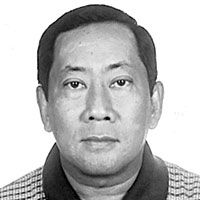Remembering the Talisay Landing 64 years ago

Sixty four years ago, the US military spearheaded by the 132nd Infantry Division also known as the Americal Division landed on the shores of Tangke, Talisay to liberate Cebu from years of Japanese occupation. I have written this story in this corner so many times before because of the book “Under the Southern Cross: The Saga of the Americal Division” written by Capt. Francis D. Cron that I copied years ago from the same book of my uncle, Col. Manuel F. Segura (Ret) who fought with the guerrilla units in the mountain fastness of Babag under the command of Col. James Cushing of the Cebu Area Command (CAC).
The Talisay Landing was code named Victor II and was part from the US invasion fleet that fought in the invasion of Leyte. The 59 Naval ships for the Cebu invasion gathered in Hinunangan Bay, Leyte. They had approximately some 15,000 officers and men where brought to Cebu on board Landing Ship Transports (LST). At the time of the US invasion, their intelligence reported that there were some 12,000 Japanese soldiers in Cebu. Towards the end of the Cebu campaign, the Americal Division belatedly realized that there were more than 20,000 Japanese soldiers stationed here.
The Talisay Landing officially commenced at exactly 0730 hours on Mar.26, 1945 when the Naval guns began pounding the beaches of Tangke, Talisay as a way of “softening” up any Japanese guns, pillboxes or machine gun nests. When the smoke cleared the numerous Landing Vehicle Tracked (LVT) carrying US troops started moving towards the shore.
The biggest single threat that the troops of the 132 Infantry Division faced were not big guns or machine guns along the shore, but the Japanese mines strewn along the beaches of Talisay all the way to Naga. These mines wrecked havoc on the LVT’s that transported the troops from ship to shore. 18 American soldiers died on the shores of Talisay 64-years ago in the fight to free us from Japanese occupation. These soldiers couldn’t even fire a single shot as their LVT’s were struck by the mines that the Japanese buried in the sands of Talisay. This stopped the invasion forces for about two hours until the mine clearing operations cleared up areas for the LVT’s to pass through.
Call it a coincidence that another uncle of mine, Dr. Alfredo Segura the younger brother of Col. Segura sent me advance clippings of another book that his wife, Tia Toding got for me entitled, “Orchids in the Mud” which is also another story about the Americal Division written from a different angle. For instance, from this new book I learned that on Mar. 28th, Company “E” commanded by Lt. Col. Joseph F. Ryneska took a landing craft to the island of Mactan and found it free of Japanese soldiers. What they found were four Japanese planes that were completely booby trapped.
As we wrote in our previous articles, the first major firefight that the Americal Division encountered was at the Go Chan Hill, which is the Eco-tech center today and still owned by the Gochan Family. That encounter lasted for nearly three days resulting in the deaths of 200 plus Japanese soldiers where some 85 pillboxes were neutralized. Three US Sherman tank were damaged and one was put out of commission. Go Chan Hill was shelled by 105 howitzers from the Hippodrome horse racetrack, which is now Barangay Hippodromo.
The biggest battle that the Americal Division faced was in Babag Mountains where Japanese defensive lines were constructed connected by various tunnels. It was in the mountains of Babag that Gen. Douglas MacArthur came to Cebu on April 19, 1945 to check on their operations. Mr. James Zobel, archivist of the MacArthur Memorial, presented a photo of Gen. MacArthur to us a few weeks ago at the Casino Español.
I also got a new information from this new book, that on 0700 hours of April 20, 1945 the 3rd Battalion was ordered to split the retreating Japanese forces into two so an amphibious landing was done in Danao by a Col. Louis L. Franco. It took three days to quell the Japanese resistance in Danao, thus forcing the Japanese troops deeper into the mountains of Central Cebu.
It would be months before Cebu was declared as totally free from Japanese occupiers. On Aug.28, 1945 or five days after VJ-Day or Victory Japan Day when the Japanese formally surrendered to the United States, Lt. Gen Sadashi Kataoka formally surrendered to Gen. William H. Arnold in Ilihan, Cebu and finally hostilities in Cebu island ceased. It turned out that some 9,000 Japanese soldiers surrendered in Cebu, which means more than 20,000 Japanese soldiers perished here during the last months of the war.
Because the Americans did not put up prisoner of war camps, they immediately repatriated the Japanese soldiers to waiting Liberty ships and returned then to Japan. That move also prevented any reprisals by angry Filipinos. That’s the history of Cebu 64 years ago. Please remember it!
* * *
Email: vsbobita@mozcom.com
- Latest
- Trending



























